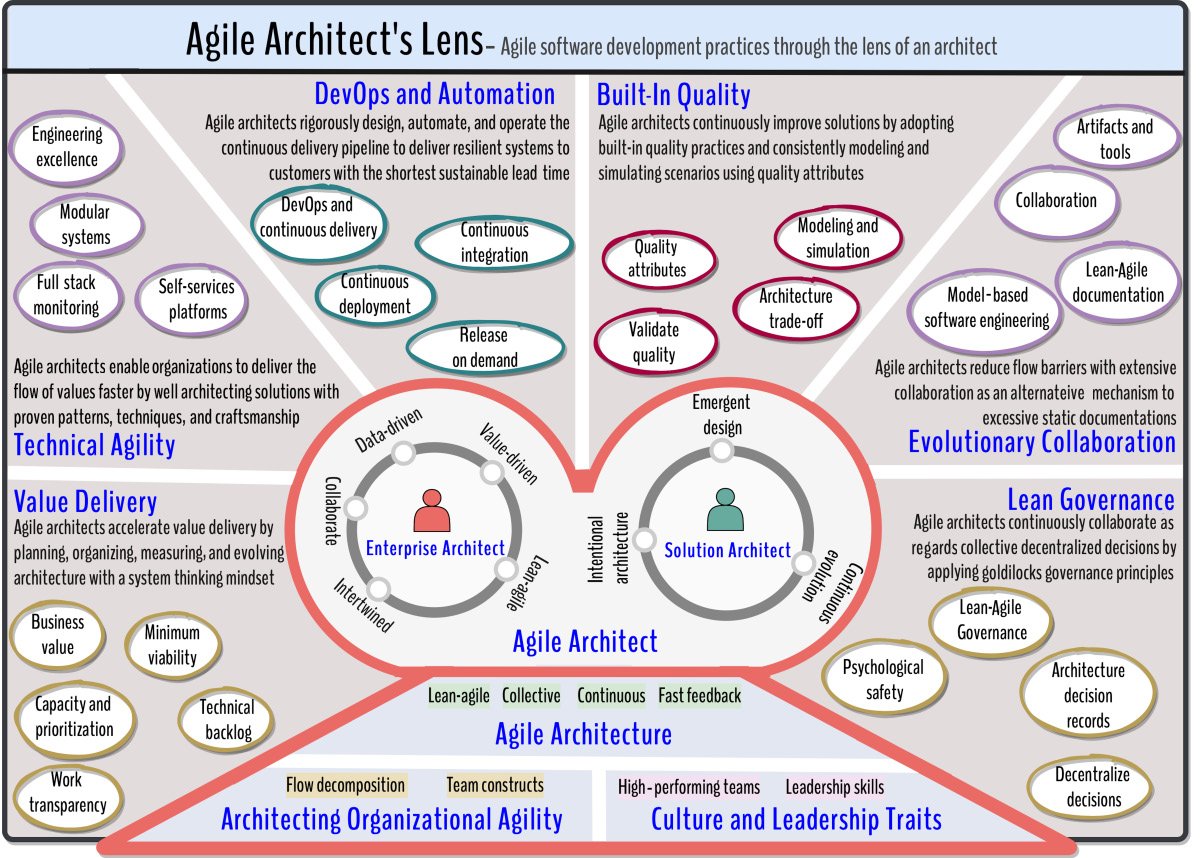Chapter 1: Looking through the Agile Architect's Lens
Agile software development is an effective practice that helps organizations continuously deliver the maximum possible business value with organizational agility. The 14th Annual State of Agile Report 2020 shows that an astounding 95% of the 1,121 respondents adopted Agile software development practices. The sharp increase in Agile adoption indicates why organizations cannot shy away from embracing Agile software development practices in their business. Most of these organizations adopt Agile software delivery practices for accelerating software delivery by successfully managing the changing priorities of the business. Architecting systems using Agile values, principles, and practices are incredibly crucial to improve productivity and deliver quality products.
This book introduces the Agile Architect's Lens—a comprehensive representation of the knowledge of key segments and leading practices for Agile architects to successfully operate in a Lean-Agile organization. The Agile Architect's Lens has twelve focal points, as shown in the diagram. Each focal point that can you see in the following figure captures tried and tested approaches, patterns, and guidelines for architects to design continually evolving solutions:

Figure 1.1 – The Architect's Lens
The Agile Architect's Lens act as a single pane of glass, guiding light, and topic navigator for readers to easily explore this book.
Agile architecture is a set of practices, principles, and guidelines for developing architecture as an intrinsic element of Agile software development. Using Agile architecture concepts, Agile teams can confidently drive sustainable, fit-for-purpose solutions to meet customer needs. We thus begin by focusing on the Agile Architecture focal point of the Agile Architect's Lens.
Agile architects need special skills to operate efficiently in Agile organizations. The collaborative nature of Agile software development needs a new set of metaphors to understand expectations from Agile architects. A well-architected solution enables organizations to deliver value with the shortest sustainable lead time, which significantly enhances business operations. Our next logical focus will therefore be on the Agile Architect focal point, followed by covering two specific architect roles crucial to Agile development projects – the Enterprise Architect and Solution Architect focal points of the Agile Architect's Lens.
Agile architects are responsible for bridging strategies and providing a shared vision to all stakeholders in the continuous delivery flow. Agile architects have to acquire technical knowledge in specific areas to address commonly occurring challenges efficiently. Hence, the knowledge kitty has to have the right blend of process excellence and technical excellence. We will therefore shift our attention next to covering the Value Delivery, Patterns and Techniques, DevOps and Automation, Built-in Quality, Evolutionary Collaboration, and Safety Nets focal points of the Agile Architect's Lens.
In addition to the knowledge kitty, Agile architects need to undergo a radical transformation in behavior and mindset to achieve operational excellence. Servant leadership is one of the foremost characteristics that Agile architects need to have, but it is just a starting position. In our journey ahead, we expand on the Culture and Leadership Traits focal point of the Agile Architect's Lens.
Business agility is one of the key motivations for many organizations to opt for digital transformation. The lean practices of Agile software delivery can boost organizational agility. However, this needs considerable effort to organize systems and people around values to be nimble enough to respond quickly to changes in business strategies. Architecting organizations around values is an essential aspect of organizational agility. We cover this in our final focal point of the Agile Architect's Lens, Architecting Organizational Agility.
In summary, digital transformation is a continuous activity for many organizations. Agile software delivery is the foundation on which the organizational agility essential to support successful transformations can be built. Architecture, and especially architects, play an extremely critical role not just in Agile software delivery but also in architecting organizations for agility. While technical excellence is paramount for architects, working beyond traditional boundaries with an intrinsically motivated team of multi-disciplinary individuals requires a significant shift in mentality.
Let's start our exciting journey by exploring our first focal point, Agile Architecture, in our next chapter.



